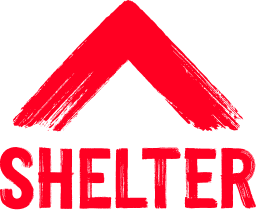A tiered approach to devolution
To become more efficient and allow teams to better serve their audiences, Shelter has committed to devolving the everyday regular publishing – with training and support from the digital product teams in England and Scotland.
Our goal is to empower colleagues around the organisation to manage updates to their own digital content, reducing lead times on smaller pieces of work, and allowing our digital product teams to focus on more complex projects.
To explain which work will be devolved, and which work will remain with the product teams, we have developed a simple, tiered model.
Tier 1) A
This is low-complexity work centred around updating something that already exists. Examples of Tier 1) A work include making small copy updates to a webpage, changing an existing image, changing the copy or link of an existing CTA, or adding a new link to an existing line of copy.
Tier 1) A work is prioritised, scheduled and delivered by anyone managing a live product, service, section or page of the website.
What is Tier 1) A: making small copy updates, changing existing images, links, stats, resources or CTAs.
What is not Tier 1) A: making large-scale changes to a page, adding multiple new paragraphs, adding new images, videos or download components that weren’t there originally.
Tier 1) B
This is low-complexity work centred around updating something that already exists. However, this work contains an additional technical or design element that means it will need to go through a formal QA process. Examples of Tier 1) B work include adding or removing a download component, adding new videos, images, or CTAs, adding large amounts of new copy, changing an event status or adding a new campaign code.
Tier 1) B work is delivered centrally at present, with a view to being devolved once our Tier 1) A processes are established, and Content Managers have a thorough understanding of the content management system.
What is tier 1) B: adding new images/videos, CTAs, download components or paragraphs of copy, changing an event status, adding a new campaign code, creating vanity urls.
What is not tier 1) B: creating a brand new page, archiving and re-directing existing pages, duplicating, or adding new sections to existing pages.
Tier 2
This is medium complexity work that may involve creating new pages, or making substantial improvements and optimisations to existing ones.
Tier 2 work is delivered centrally by content teams.
What is tier 2: creating new pages, substantially improving or optimising existing pages, duplicating pages.
What is not tier 2: launching a brand new product or service, high complexity, or innovation work.
Tier 3
This is work we haven’t done previously at Shelter. Work with high levels of uncertainty and risk. It often involves researching and solving specific business problems, or meeting a specific user need.
Typically, we form a team around the problem by joining experts to the product team. These teams are led by a product manager.
The work is prioritised by individual business owners and run by product teams, in collaboration with content owning teams when needed.
This could include:
new products or services
innovation
high complexity work
We’ll monitor how the tiers are working.
Who makes the decision on when to devolve work?
If a piece of work doesn’t meet the Tier 1) A or B criteria, the relevant product manager will work with the Joint Planning Board to decide if it can be delivered by a product team.
Perpetuating the lifecycle
Whichever team work gets distributed to or owned by, that work must follow the digital lifecycle, a vital part of Shelter’s digital framework.
The lifecycle covers beginning-to-end ownership of products and services, from future vision and business planning, through to maintaining the live output - and even decisions on retiring a product or service.
Related
Our devolved model of web publishing
The content roles that drive the model
Content operations: from governance to the content lifecycle
The principles, guidelines and standards that underpin Shelter’s digital output
Learn the lingo with our digital glossary
Contact us about the digital framework
Have a question or comment? Found a bug? Or maybe you’d like to contribute to the framework? Use our contact form to get in touch.
